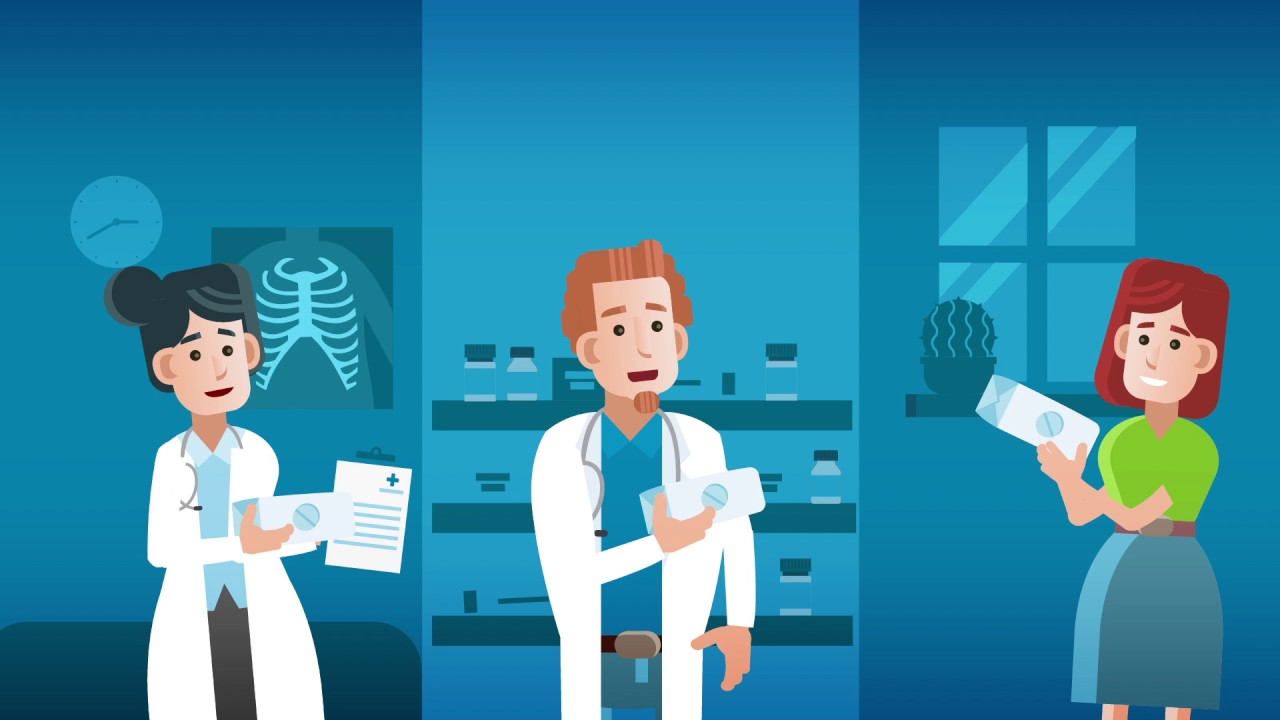Adult Vaccination Test App
Every year, more and more people of all ages are falling sick, either due to a disease or a pre-existing condition. Vaccination is a proven method of preventive care as they are known to produce antibodies to fight various diseases. However, it is essential that you have the support of medical experts who can guide you along the way.moPharma

What are Vaccines?
A vaccine is a biological preparation that helps improve immunity to a particular disease. A vaccine usually contains an agent that resembles a disease-causing microorganism and is mostly made from the weakened or killed forms of the microbe, its toxins or any of its surface proteins. The agent is one that stimulates the body’s immune system to recognise the agent as foreign and destroy it. The agent also needs to remember the foreign agent so that the immune system can identify it more easily and destroy any of the microorganisms that it encounters later.
Vaccines are clever, they trick our bodies into building immunity against infectious diseases, without causing the illness. Usually, a dead or weakened version of the disease-causing germ (bacteria or virus) is introduced to our immune system. In some cases, inactivated toxins produced by the germ are used in the vaccine to develop immunity (for example, diphtheria and tetanus vaccines). We call these antigens, and they are the most important ingredient of all vaccines.
Once we’ve been vaccinated, if our immune system encounters the ‘real’ disease- causing germ, it responds quickly and creates antibodies and memory cells to give the body protection.
Immunisation (vaccination) is the most effective preventative measure against serious diseases. Some vaccines offer lifelong immunity. In other cases, <‘catch-ups’ or booster shots are needed.
When were vaccines developed?
Vaccines are not new – immunisation techniques were pioneered over 200 years ago, when smallpox was a feared and deadly disease. An eighteenth century doctor named Edward Jenner noted that workers on farms who contracted the mild cowpox disease were immune to smallpox.
Jenner guessed that the germ responsible for cowpox was similar enough to the smallpox germ to ‘train’ the immune system to defeat both diseases. He was correct. Immunisation in Australia today relies on similar principles.
How do vaccines work?
Our immune system< is made up of special cells and chemicals (called antibodies) that fight infection. We gain immunity against diseases either naturally (by catching an illness), or through immunisation.
Vaccines are made up of a modified version of a disease-causing germ or toxin (known as ‘antigens’). They are usually given by injection or a small drink that contains the vaccine.
The immune system responds to the weakened, partial or dead germ or inactivated toxin (antigen) as if it was a fully-fledged germ, and makes antibodies to destroy it. These antibodies are made without us catching the illness.
How do vaccines help our immunity?
Our immune system is like a library – it stores information about every germ ever defeated. We sometimes call this immunological memory.
Some antibodies remain ‘on patrol’ in our bloodstream. So if we ever encounter the real germ in the future, our immune system can quickly trigger the memory cells and produce antibodies to defeat it. And this often occurs before we experience any symptoms of illness.
Each vaccine is designed according to how the specific germs make us sick. For example, measles is the result of the body’s reaction to the whole virus and so the vaccine contains a weakened form of the virus. On the other hand, tetanus is caused by the body’s reaction to the toxin produced by the tetanus bacteria and so the vaccine contains inactivated tetanus toxin.
What is in vaccines?
Depending on the infection, ingredients in vaccines can vary. They may also change from year to year as new strains of viruses (such as the flu) appear. Some vaccines may contain a small dose of:
a live (but weakened) germ
dead germs
small parts of germs (for example, a molecule from the surface of a germ)
inactivated toxins produced by bacteria
antibiotics or preservatives to stop the vaccine from becoming contaminated or going off
diluents (such as sterile water or saline).
Australia has strict rules on vaccine safety. Before a vaccine is registered by the Therapeutic Goods Administration (TGA) and made available to the public it goes through rigorous testing. And, even when it is used, it is constantly monitored for safety and effectiveness.
How are new vaccines developed?
It takes a long time to develop a new vaccine – usually between 10 and 15 years. Vaccines go through many phases of development – including research, discovery, pre-clinical testing, clinical testing (which can take up to seven years) and regulatory approval. Once the vaccine is approved (another lengthy process of up to two years), the vaccine is then manufactured and shipped to where it’s needed.
After vaccines are introduced into immunisation schedules, they are closely monitored through trials and surveillance to see if they are effective and safe. In Australia, there are regional and national surveillance systems actively looking for any adverse events following immunisation. This is necessary, as sometimes unexpected side effects occur after vaccines are registered for use.
Some vaccines, such as the flu, need to be updated every year to respond to changing infection strains and conditions. For these updates, the process is compressed to ensure the vaccine is available as needed.
Are vaccines safe?
Millions of people – many of them babies and young children – are immunised every year, with no side effects. Vaccines are much safer than getting sick from a disease. Diseases that can be prevented by vaccines can cause lifelong complications or death – even in normally healthy people.
From time to time, the safety of vaccines has been questioned. Most reactions are mild and usually last one to two days. Like any other medication, vaccines carry a small degree of risk, but serious side effects are rare.
The risk of serious side effects must be weighed against the risk of the disease. For example, although there is a small risk of developing the rare condition known as idiopathic thrombocytopenic purpura (ITP), after the measles, mumps, rubella and varicella (MMRV) and MMR vaccine. However, the risk of developing ITP with measles itself is more than 10 times greater than the risk associated with the vaccine.
How successful are vaccines?
Vaccination is the most effective preventative measure against infectious diseases. Most vaccine preventable illnesses, are highly contagious, spread quickly and can cause severe complications which may impact on our quality of life.
Vaccines give us immunity without us getting sick. They also protect vulnerable people in our community who cannot be immunised – such as very young children or those who are too sick.
When enough people in the community are vaccinated, the spread of a disease slows down or stops completely. So as long as enough people are vaccinated, diseases will not spread. We call this herd immunity or ‘community immunity’. For example:
measles, mumps, rubella – 95 out of every 100 people vaccinated will be completely immune
whooping cough – about 85 out of every 100 people vaccinated will be completely immune.
How long does it take for a vaccine to work?
When we receive a vaccine, our immune system gets to work immediately to create antibodies and memory cells to fight the infection. On average, an ‘immune response’ will take around 7-21 days.
However, the duration of immunity can depend on a number of factors, such as the nature of vaccine, the timing of dosages, our age, and whether we have had an infection naturally.
To be protected from vaccine-preventable diseases, make sure to stick to the recommended schedules and keep your immunisations up to date.
Which vaccines do we need?
Vaccines not only protect us, but vulnerable people in our community (such as the young, the elderly, or those with weakened immunity).
The vaccines we may need are determined by our health, age, lifestyle and occupation. Together, these factors are known as HALO.
HALO is defined as:
health – some people may benefit from additional or more frequent immunisations due to health factors. For example, premature babies, or those with conditions (such as asthma, diabetes, HIV and disorders of the lungs, spleen or kidneys).
age – at certain ages, we are more vulnerable to some illnesses. Such as in: childhood, in secondary school and when we are older.
lifestyle – some lifestyle choices can put us or the community at risk, such as overseas travel, moving to Australia, becoming a new parent,sexual activity, smoking, or playing contact sport.
occupation – some jobs have a higher risk of exposure to infections. Such as those who work in hospitals, childcare and emergency services.
Check your immunisation HALO using the Immunisation for Life Infographic (pdf) downloadable poster.
Remember, if you are not sure about what vaccines you need, talk to your GP (doctor). If you find you are not up to date with your vaccinations, your GP will tell you about catch-ups and boosters.
Why are Vaccines important?
During the past years, vaccinations in India have saved more than a billion lives and prevented countless people from falling prey to a wide range of illnesses and disabilities. However, vaccine-preventable diseases such as mumps, measles, and whooping cough are still a threat. They continue affecting children, thus, resulting in hospitalisations and deaths each year. Immunisations are important for two main reasons. First, to protect yourself and second, to protect those around you. Vaccines are one of the best ways to prevent diseases.
What are the benefits of Vaccines?
While the benefits of immunisation are invisible, the idea is that you or your child will not become ill with any disease. Sometimes, it may be tempting to say ‘NO’ to immunisation. However, this puts health at risk of catching some severe or fatal diseases. In reality, taking a vaccination is better and safer than not taking one. Vaccination may not be 100% effective, but it is the best defence against epidemics that kill or disable millions of people.
How Vaccines Work
To understand how vaccines work it’s helpful to first understand how the body’s immune system works to protects us against disease.
Your immune system
Your immune system is made up of a specialized network of organs, cells, and tissues that all work together to help protect you against disease. When a disease-causing germ (for example, a virus or bacteria) enters your body, your immune system:
Recognizes the germ as being foreign (not belonging in the body).
Responds by making special proteins (called antibodies) that help destroy the germ. Most of the time, your immune system can’t act fast enough to stop the germ from making you sick. But by destroying the germ, it can usually help you get well again.
Remembers the germ that made you sick and how to destroy it. That way, if you are ever exposed to the same disease germ in the future, your immune system can quickly destroy it before it has a chance to make you sick. This protection is called immunity.
Vaccines and your immune system
Vaccines give you immunity to a disease without you getting sick first. They are made using killed or weakened versions of the disease-causing germ or parts of the germ (called antigens). For some vaccines, genetic engineering is used to make the antigens used in the vaccine. It’s much safer to get a vaccine than to get the disease it prevents.
When you get a vaccine, your immune system responds to the vaccine the same way it would to the real germ. It:
Recognizes the germ in the vaccine as being foreign.
Responds by making antibodies to the germ in the vaccine, just as it would for the real germ.
Remembers the germ and how to destroy it. That way if you are ever exposed to the disease-causing germ in the future, your immune system will be able to quickly destroy it before it has a chance to make you sick. This is how you get immunity from vaccines.
What are the different Vaccinations for children and adults?
Appropriate age-related vaccines are formulated for both children and adults at various stages of their life, to prevent them from contracting certain diseases and health issues. Mentioned below are some vaccines that are essential for children, young adolescents and adults.
- Vaccines for new-born babies through 12 months
- Vaccines for toddlers aged 1 to 2 years
- Vaccines for children between 4 to 6 years of age
- Vaccines for adolescents between 11 to 12 years of age
- Vaccines for adults
Every child needs vaccines beginning from 2 to 12 months of age.
During the first six months of age, babies need multiple vaccinations, a few of which are:
DTaP that helps protect them from diphtheria and whooping cough
IPV that protects them from Polio
Rotavirus that helps protect them from rotavirus diseases such as vomiting, dehydration and diarrhoea.
Hepatitis B vaccine that helps protect against liver diseases that are caused by the Hepatitis B virus, including the dosage given at birth.
Once your baby turns a year old, he or she needs a few vaccines which includes:
MMR vaccine that protects them against measles, mumps; and rubella, which could avoid blindness, pneumonia, deafness, mental retardation, and more.
DTaP is a standard dose that is given to help protect infants from tetanus, diphtheria and more.
Varicella is a vaccine that combats chickenpox.
Hepatitis A vaccine helps protect children against liver diseases that are caused by the Hepatitis A virus.
DTaP, Polio boosters, MMR and Varicella, are vaccinations that be must be given to children before they start attending school / day care.
Make sure your child receives his boosters as early as at four years of age.
Tdap is a vaccine that protects against diphtheria, tetanus and pertussis.
MCV / Meningococcal Conjugate Vaccine helps the body fight against infections of the fluid and lining around the brain and spinal cord (meningitis), and bloodstream infections.
HPV or Human Papillomavirus Vaccine protects against viruses that cause about 70% of cervical cancer in women and others diseases in both, males and females.
Adults need immunisation as well. Over time, our immunity to tetanus, pertussis, and diphtheria fade off, and other vaccines are needed that are based on one’s age and lifestyle.
A few vaccinations for adults are:
Tdap, which helps fight tetanus, diphtheria and acellular pertussis.
Hepatitis B, which is recommended for those adults who are at risk.
MMR, for adults who have never had measles, mumps or rubella.
Varicella, for those who have never had chickenpox.





Discuss about post